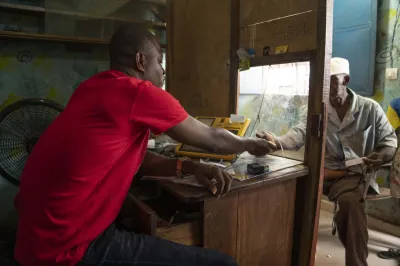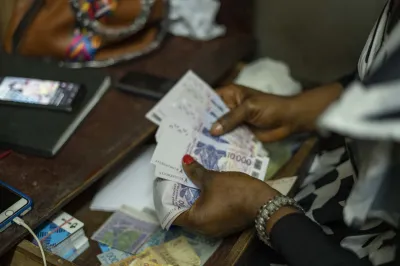The Alternatives to Mobile Money
This is a guest blog by Salah Goss, Associate Program Officer in the Financial Services for the Poor program at the Bill & Melinda Gates Foundation.
Mobile money often begins with a customer withdrawing cash in a store in his or her community, or sending money directly from their mobile money account to a relative living far away. But what if we began our story when none of these existed? Let’s start in a country where cash is difficult to access, store and move, where it actually takes four hours for a customer to do a four minute bank transaction, where walking out of a money transfer house often means being robbed, where sending money to parts of the country can only happen by boat or requires a half day road journey through a neighboring country. Add to this the devastation of a 7.0 magnitude earthquake and its after- shocks, a national cholera outbreak and on-going political violence.
So what if the story of mobile money began there? In Haiti in the midst of this on-going chaos, two mobile operators, Digicel and Voila, have launched mobile money services offering Haitians the ability to store funds through their mobile accounts, purchase goods electronically and transact safely and rapidly without having to access the limited bank infrastructure. In anticipation of the arrival of mobile money, a team of researchers from UC Irvine went to Haiti in June to get a snapshot of how money is traditionally transferred throughout the country. To understand the full impact that mobile money can have on the lives of Haitians, let’s look at the situation before mobile money.
Below are two stories of the burden of sending and receiving cash in Haiti. The full report on the before picture can be found here and here.
Example of Transfer Costs using Money Transfer Services: SogeXpress
David needed to send money to his cousin in his hometown, Le Borge, because he still owed some money for his brother’s funeral. For David, the transaction was relatively easy: he visited a SogeXpress office in Port-au-Prince and paid 150 Gourdes* to send the 1,250 Gourdes he owed. However, for his cousin in le Borge, receiving the money required a considerable expenditure of time and money.
Since there is no SogeXpress office in Le Borgne, David sent the money to SogeXpress’s office in Port de Paix. According to David, in order to reach the office in Port-de Paix, his cousin must walk 1.5 hours from his house to the town of Anse a Foleur. Once in Anse-a-Foleur, he spent 2 hours and paid 300 Gourdes for the tap-tap (bus) that took him to Port-de Paix. His journey ended after he paid 30 Gourdes for the taxi that took him to the money transfer office. In sum, David and his cousin spent 838 Gourdes and 7 hours to send 1,250 Gourdes from one part of Haiti to another.
Cost for David’s Transfer
Cost for David’s cousin to Receive the Transfer
Example of Transfer Costs from Anse-a-Pitres to Jacmel (by boat)
To send money with a boat captain, Joseph speaks with a captain and gives him the cash with the name and phone number of the intended recipient. The sender will then send a text message to the receiver with the amount of the transfer and the captain’s name and phone number. The receiver must then meet the captain in Marigot on the morning after the boat arrives.




Add new comment